Iceland
Welcome to Iceland
Welcome to Iceland, the legendary Land of Fire and Ice-a place where nature’s raw power and beauty are on display at every turn. In 2025, Iceland stands out as one of the world’s most captivating travel destinations, offering dramatic landscapes, vibrant culture, and a sense of adventure that’s hard to match. Whether you’re drawn by the allure of the Northern Lights, the thrill of volcanic landscapes, or the warmth of geothermal spas, Iceland promises an unforgettable journey.
Iceland is a Nordic island nation in the North Atlantic, known for its striking contrasts: glaciers and volcanoes, midnight sun and polar nights, ancient sagas and cutting-edge art. With a population of around 370,000, it’s one of Europe’s least densely populated countries, giving travelers plenty of space to explore its wild terrain. Reykjavík, the capital, is a lively hub of culture, cuisine, and innovation, serving as the perfect gateway to the country’s natural wonders.
The official language is Icelandic, but English is widely spoken, making travel easy for international visitors. Iceland’s infrastructure is excellent, with well-maintained roads, a range of accommodation options, and a welcoming spirit that makes visitors feel right at home.
Why Visit Iceland?
1.
Culture and Adventure: Beyond its natural beauty, Iceland boasts a rich cultural heritage rooted in Viking history and a thriving modern arts scene. From ancient sagas and folklore to contemporary music and literature, Icelandic culture is deeply intertwined with its dramatic environment. Adventurers will find endless opportunities-from glacier hiking and whale watching to exploring the rugged Highlands, which are becoming more accessible and popular in 2025.
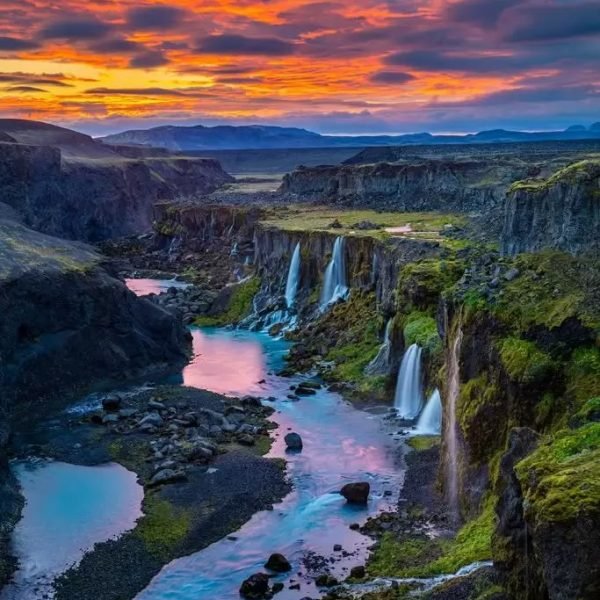
2.
Nature and Wellness Retreats: Hungary’s natural beauty is as diverse as it is breathtaking. Lake Balaton, Central Europe’s largest freshwater lake, is a summer playground for swimming, sailing, and wine tasting. The country’s famed thermal baths, from the ornate Széchenyi in Budapest to the open-air pools of Hévíz, invite visitors to relax and rejuvenate in mineral-rich waters that have soothed travelers for centuries.
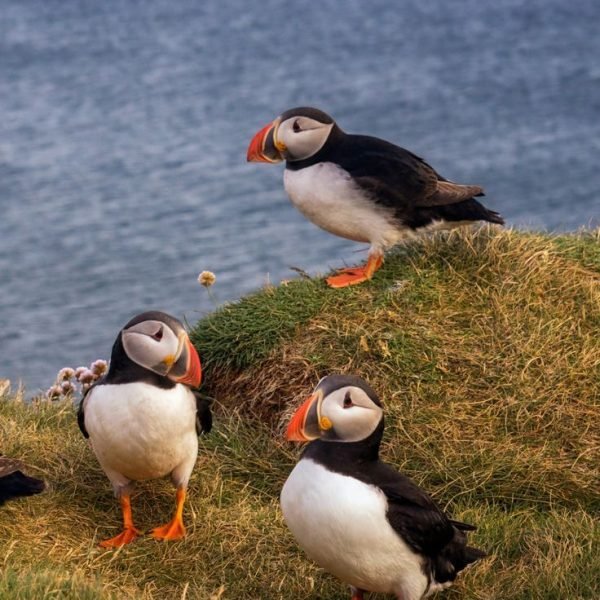
Planning Your Trip
Visa Information
Schengen Visa Requirements
Iceland is a member of the Schengen Area, which means travelers from many countries will need a Schengen visa for short stays (up to 90 days within a 180-day period). The visa allows you to visit Iceland and other Schengen countries during your stay.
Who Needs a Visa?
- Citizens of the EU/EEA and Schengen countries do not need a visa to enter Iceland.
- Citizens of the United States, Canada, Australia, the UK, and several other countries can enter Iceland visa-free for up to 90 days for tourism or business.
- Travelers from other countries (such as Nigeria and India) must apply for a Schengen visa in advance.
Application Process
- Gather Required Documents: These typically include a completed application form, recent passport-sized photo, a valid passport (with at least two blank pages and valid for at least three months beyond your departure), travel insurance (minimum coverage of €30,000), proof of accommodation, roundtrip flight reservations, and proof of sufficient financial means.
- Book an Appointment: Schedule an appointment at the nearest Icelandic embassy, consulate, or visa application center.
- Submit Application and Biometrics: Attend your appointment, submit your documents, provide biometrics, and pay the visa fee.
- Processing Time: The standard processing time is up to 15 working days, but it can take longer during peak seasons or if additional documentation is required.
- Visa Fees: As of 2025, the Schengen visa fee is €90 for adults, €45 for children aged 6-12, and free for children under 6.
Common Reasons for Visa Rejection
- Expired or soon-to-expire passport
- Insufficient funds
- Incomplete or invalid travel insurance
- Previous visa violations
- Criminal record
Tip: Apply well in advance of your intended travel dates to avoid delays, especially during busy travel seasons.
Best Time to Visit
Iceland’s unique climate and dramatic seasonal shifts mean your experience will vary greatly depending on when you visit. Each season offers its own highlights:
Winter (January–March, November–December):
- Northern Lights: 2025 is forecasted to be an exceptional year for aurora viewing due to heightened solar activity. The long, dark nights provide perfect conditions for witnessing the Northern Lights.
- Winter Activities: Enjoy ice cave tours, glacier hikes, snowmobiling, and skiing. The landscape transforms into a snowy wonderland, and tourist numbers are lower, making for a more tranquil experience.
- Festive Season: Reykjavík comes alive with festive markets and traditional celebrations.
Spring (April–June):
- Nature Awakens: The days grow longer, and the landscape bursts into life. This is a quieter time, ideal for birdwatching (especially puffins) and seeing waterfalls at their fullest.
- Fewer Crowds: Enjoy popular sites with fewer tourists and mild weather as the snow melts away.
Summer (July–August):
- Midnight Sun: Experience nearly 24-hour daylight, perfect for maximizing sightseeing and outdoor adventures.
- Highland Access: The interior Highlands become accessible, opening up opportunities for hiking, camping, and off-road adventures.
- Festivals: Iceland’s cultural calendar is packed with music, art, and food festivals.
Autumn (September–October):
- Northern Lights Return: As nights lengthen, aurora viewing opportunities increase.
- Vivid Landscapes: The countryside is painted in autumnal reds and golds, creating stunning photo opportunities.
- Milder Weather: Enjoy comfortable temperatures and fewer crowds before winter sets in.
Choosing Your Season
- For Northern Lights: Visit between late September and early April.
- For Midnight Sun and outdoor activities: Visit from June to August.
- For fewer crowds and lower prices: Consider spring (April–June) or autumn (September–October).
Getting To and Around
Getting to Iceland
By Air
The vast majority of travelers arrive in Iceland by air. Keflavík International Airport (KEF), located about 50 kilometers from Reykjavík, is the main international gateway.
- Direct Flights: Iceland is well-connected to North America and Europe. Airlines such as Icelandair and PLAY offer direct flights from major cities like New York, Boston, London, Paris, and Amsterdam. Budget carriers like Wizz Air and easyJet provide affordable options from various European destinations.
- Domestic Flights: For exploring regions beyond Reykjavík, domestic flights are available to Akureyri (north), Egilsstaðir (east), and Ísafjörður (Westfjords). Note that international and domestic flights operate from different airports in the Reykjavík area.
By Sea
- Ferry: The Smyril Line operates a ferry service from Denmark (via the Faroe Islands) to Seyðisfjörður in East Iceland. This is a popular option for travelers wishing to bring their own car, camper, or motorcycle.
- Cruises: Many cruise lines include Iceland in their North Atlantic itineraries, with stops in Reykjavík, Akureyri, and Ísafjörður.
Getting Around Iceland
By Car
- Self-Drive: Renting a car is the most popular and flexible way to explore Iceland, especially for those wanting to follow the iconic Ring Road (Route 1) that circles the island. A 4×4 vehicle is recommended for winter travel or if you plan to venture into the Highlands.
- Campervans: Increasingly popular, campervans offer flexibility and the chance to stay close to nature at campgrounds across the country.
Public Transport
- Buses: Scheduled bus services connect Reykjavík with major towns and tourist sites, but routes and frequencies are limited, particularly in winter or remote areas.
- Tours: Guided day tours and multi-day excursions depart from Reykjavík, ideal for those who prefer not to drive or want expert guidance.
Domestic Flights
- Air Travel: For reaching distant regions quickly, domestic flights are available to Akureyri, Egilsstaðir, and Ísafjörður. This is a time-saving option for those with limited time or wishing to explore the north, east, or Westfjords.
Other Options
- Cycling: Adventurous travelers sometimes explore Iceland by bicycle, but be prepared for challenging weather and terrain.
- Ferries: In addition to the international ferry, several local ferries connect islands and peninsulas, such as the ferry to the Westman Islands.
Important Tips
- Weather Preparedness: Icelandic weather is famously unpredictable. Always check road and weather conditions before setting out, especially in winter.
- Driving Regulations: Headlights must be on at all times. Off-road driving is strictly prohibited to protect fragile landscapes.
- Fuel: Gas stations can be sparse in remote areas; fill up when you can.
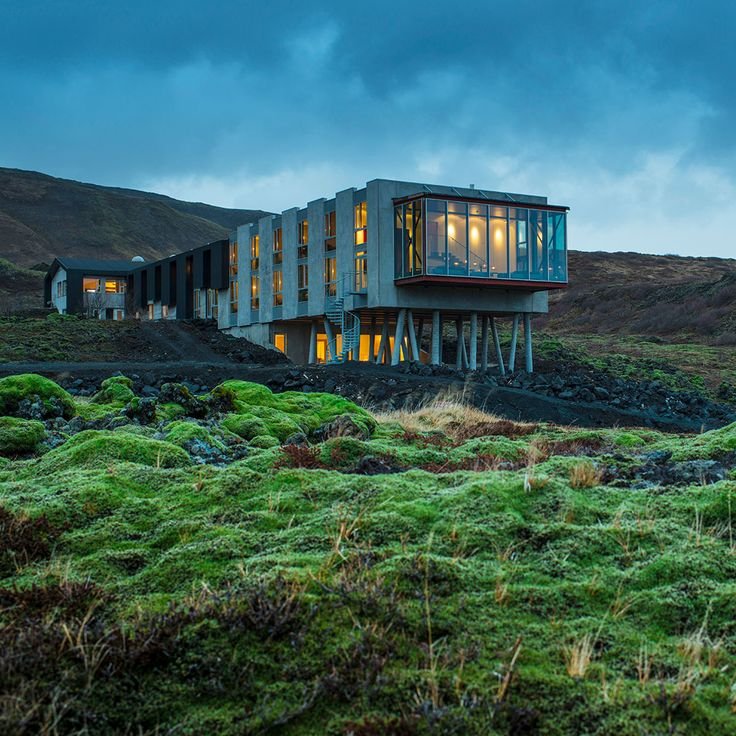
Accommodation
From Reykjavík’s design-forward hotels to remote Highland lodges, Iceland’s accommodations blend innovation with nature. Below are the top options for 2025, categorized by style and region.
Unique Stays
- Ion Adventure Hotel: Near Þingvellir National Park, this minimalist lodge offers floor-to-ceiling views of lava fields and an outdoor geothermal pool. Ask for a Northern Lights wake-up call-staff will alert you if auroras appear.
- Reykjavik Domes: Glass-and-tent hybrids in a seaside neighborhood, each with a private jacuzzi and views of Mt. Esja. Ideal for couples seeking privacy and proximity to the capital’s nightlife.
- Magma Hotel: Near Kirkjubæjarklaustur, these standalone cabins sit beside a lava field, offering prime aurora views. Rooms include Netflix-equipped TVs and in-floor heating.
South Coast Gems
- Seljalandsfoss Horizons: Luxury cottages 1 km from the iconic Seljalandsfoss waterfall, with kitchenettes and easy access to Vík’s black sand beaches.
- Umi Hotel: A design-centric property in Hvolsvöllur featuring geothermal tubs and a gourmet restaurant. The nearby black sand beach is a 20-minute walk.
- Hotel Kría: Modern rooms in Vík with mountain views, plus an on-site cocktail bar. Steps from Reynisfjara Beach and the Vík Lava Show.
Ring Road Essentials
- Adventure Hotel Hof: Budget-friendly rooms near Skaftafell and glacial lagoons, with a restaurant serving Icelandic classics.
- Fossardalur Guesthouse: A remote Eastfjords farmstay offering camping and shared kitchens, surrounded by misty mountains.
- Stora Sandfell Cottages: Near Egilsstaðir, these cabins include kitchens and panoramic views of Hengifoss’s basalt columns.
Practical Tips
- Book Early: Popular properties like Ion Adventure Hotel or Magma Hotel sell out months ahead, especially during aurora season (September–April).
- Camping Rules: Sleeping in campervans outside designated campsites is illegal. Use organized sites like Þakgil or Skaftafell for facilities.
- Budget Options: KEX Hostel (Reykjavík) and Grai Hundurinn Guesthouse (East Iceland) offer dorm beds and private rooms under $100/night.
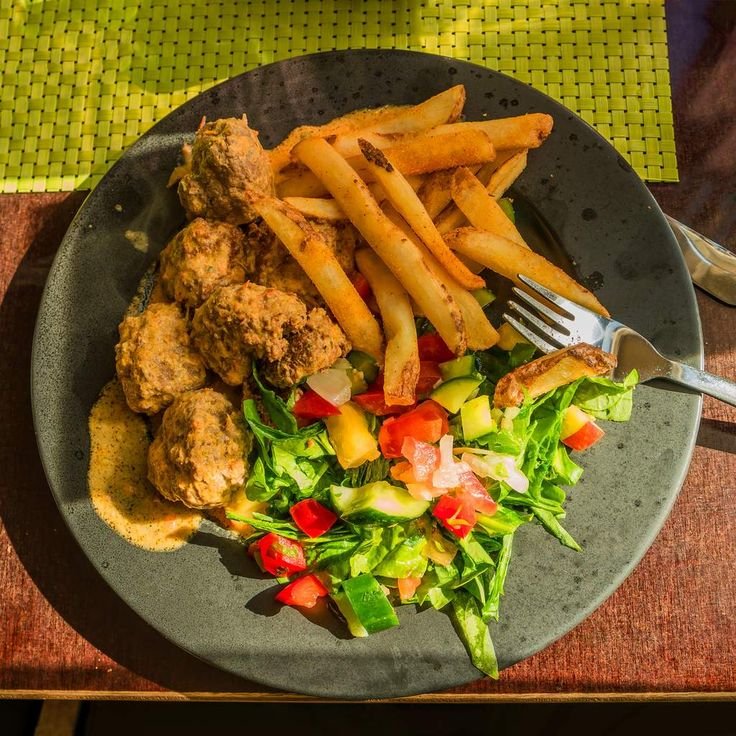
Food and Drink
Iceland’s cuisine merges Viking-era traditions with New Nordic creativity. From fermented shark to skyr cheesecake, here’s what and where to eat in 2025.
Must-Try Dishes
- Lamb: Grass-fed and free-range, served roasted, in stews (kjötsúpa), or as smoked hangikjöt. Try it at Dill (Reykjavík’s Michelin-starred restaurant) or Umi Hotel’s kitchen.
- Seafood: Fresh langoustine in Höfn, smoked salmon in Borgarfjörður, and fermented Greenland shark (hákarl) for the adventurous.
- Skyr: A yogurt-like dairy staple, used in breakfast bowls, smoothies, or desserts like Café Loki’s rye bread ice cream.
- Hot Dogs: Baejarins Beztu Pylsur in Reykjavík serves Iceland’s iconic lamb-and-pork pylsur with crispy onions and remoulade.
Dining Hotspots
- Reykjavík:
- Matur og Drykkur: Reimagines historic recipes, like cod-head stew.
- Fish Market: Offers sushi-grade salmon and whale carpaccio (note: whale hunting is controversial; check sustainability practices).
- Countryside:
- Vík’s Sudur-Vík: Pizzas with local ingredients, like lamb and blue cheese.
- Geysir Bistro: Near the Strokkur geyser, serving lamb shanks and geyser-baked rye bread.
Budget-Friendly Eats
- Bonus Supermarket: Stock up on Skyr, rye bread, and Icelandic chocolate.
- Noodle Station: Reykjavík’s $12 pho spot, perfect for late-night cravings.
- Gas Stations: Surprisingly good for grilled sandwiches and pylsur.
Drinks & Nightlife
- Craft Beer: Microbreweries like Einstök (Arctic Berry Ale) and Mikkeller & Friends (Reykjavík) thrive post-2001 legalization.
- Brennivín: The herbal schnapps nicknamed “Black Death,” best paired with hákarl.
- Kaffitar: Iceland’s answer to Starbucks, with cardamom-infused lattes.
Insider Tips for 2025
- Tipping: Not expected-service charges are included.
- Water: Tap water is pure and free; skip bottled versions.
- Dining Hours: Restaurants serve lunch until 2 PM and dinner from 6 PM. Reserve ahead for popular spots.
- Food Tours: Reykjavík’s Wake Up Reykjavík tour includes stops at bakeries, fish houses, and a secret soup kitchen.
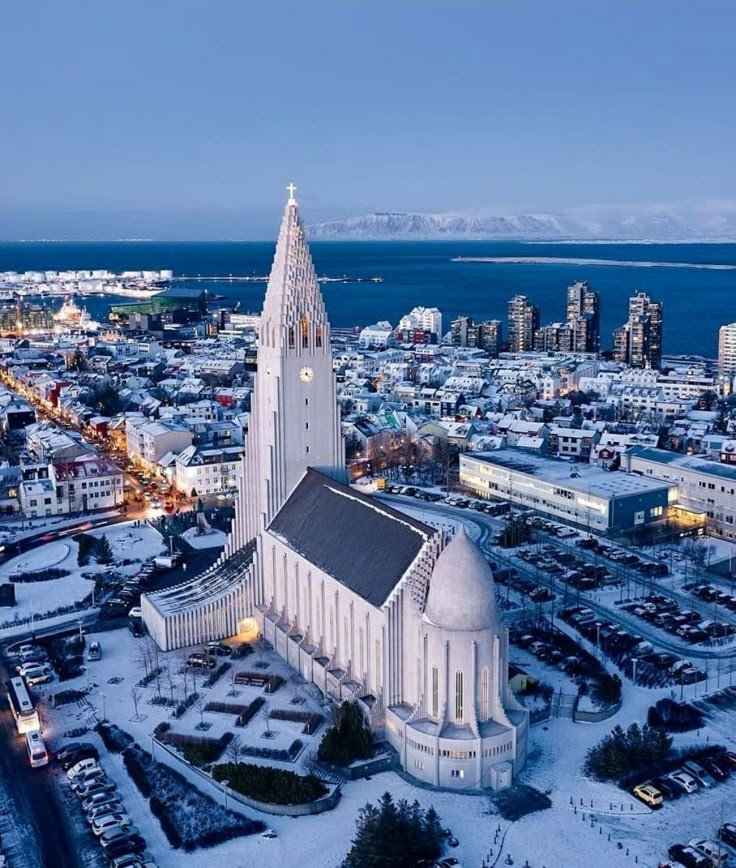
Must-See Attractions
Golden Circle Classics
- Þingvellir National Park: Walk between the North American and Eurasian tectonic plates at this UNESCO World Heritage Site, where Iceland’s ancient parliament once convened4.
- Gullfoss Waterfall: Marvel at the two-tiered “Golden Falls,” where the Hvítá River plunges 32 meters into a rugged canyon.
- Strokkur Geyser: Watch this explosive hot spring erupt every 5–10 minutes, shooting water 20 meters high.
South Coast Wonders
- Seljalandsfoss & Skógafoss: Walk behind Seljalandsfoss’s curtain-like cascade, then brave the mist at Skógafoss, a 60-meter powerhouse.
- Reynisfjara Black Sand Beach: Wander this volcanic shoreline near Vík, where basalt columns and crashing waves create a surreal atmosphere.
- Jökulsárlón Glacier Lagoon: Spot seals among icebergs at this iconic lagoon, then visit nearby Diamond Beach, where ice chunks glitter on black sand.
East & North Gems
- Vatnajökull National Park: Explore Europe’s largest glacier, where guided ice cave tours reveal sapphire-blue caverns (winter only).
- Dettifoss Waterfall: Feel the raw power of Europe’s most voluminous falls, located in the rugged Northeast.
- Goðafoss: Nicknamed “Waterfall of the Gods,” this horseshoe-shaped cascade is steeped in Viking history.
West & Reykjanes Peninsula
- Kirkjufell Mountain: Snap photos of Iceland’s most photographed peak, framed by waterfalls and coastal vistas.
- Blue Lagoon: Soak in milky-blue geothermal waters surrounded by lava fields (check for reopening updates post-volcanic activity).
- Reykjanes Geopark: Witness steaming fumaroles and the Bridge Between Continents at this UNESCO-listed site.
Reykjavík Highlights
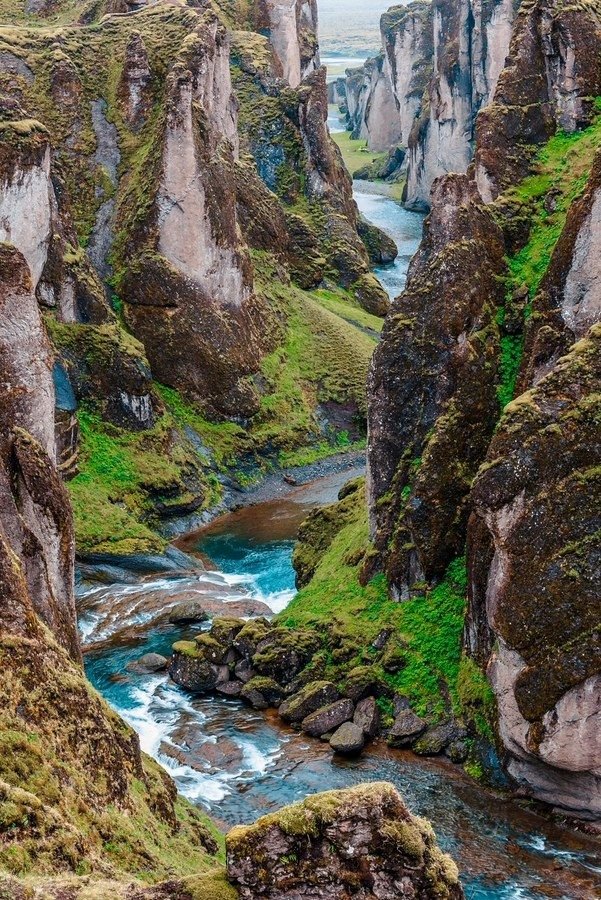
Must-Do Activities
- Chase the Northern Lights (September–April)
2025’s solar maximum promises vibrant auroras. Join a guided tour to remote spots like Þingvellir or Jökulsárlón, or rent a car and track forecasts via the Aurora app.
- Soak in Geothermal Spas
- Sky Lagoon: Near Reykjavík, this infinity-edge pool blends ocean views with a seven-step ritual, including cold plunges and saunas.
- Árböðin (The River Baths): Opening in 2025 on the Golden Circle, this lagoon will use natural river currents for a unique soak.
- Secret Lagoon: Iceland’s oldest geothermal pool, in Flúðir, offers a quieter alternative to the Blue Lagoon.
- Explore Ice Caves & Glaciers
- Vatnajökull Ice Caves: Join a guided tour to navigate crystal-blue tunnels beneath Europe’s largest glacier.
- Glacier Hiking: Strap on crampons and trek across Sólheimajökull or Vatnajökull with certified guides.
- Drive the Ring Road (Route 1)
Circle the island in 7–10 days, stopping at highlights like Akureyri’s botanical gardens, the Eastfjords’ fishing villages, and Snæfellsnes Peninsula’s lava caves.
- Whale Watching & Puffin Spotting
- Húsavík: The “Whale Capital of Iceland” offers summer tours to see humpbacks, blue whales, and dolphins.
- Látrabjarg Cliffs: Visit Westfjords in June–August to photograph puffins nesting on Europe’s largest bird cliff.
- Hike the Highlands
- Landmannalaugar: Trek through rhyolite mountains and soak in natural hot springs on the Laugavegur Trail.
- Askja Caldera: Journey to this remote volcanic crater lake, where you can swim in the geothermal Víti Pool.
- Dive the Silfra Fissure
Snorkel or dive between tectonic plates in Thingvellir’s crystal-clear waters, visibility exceeding 100 meters.
- Ride Icelandic Horses
These sturdy, smooth-gaited horses are bred for Iceland’s terrain. Try a lava-field ride near Reykjavík or a beach gallop in Vík.
- Sample Icelandic Cuisine
- Reykjavík Food Walk: Taste fermented shark, lamb stew, and skyr cheesecake on a guided tour.
- Farm-to-Table Dining: Book a table at Friðheimar greenhouse restaurant for tomato soup grown onsite.
- Discover New 2025 Experiences
- Volcanic Way: Drive this new route through the Reykjanes Peninsula’s lava fields and recent eruption sites.
- Highland Baths: Relax in geothermal pools at Kerlingarfjöll, a mountain range with hot springs and hiking trails.
Practical Tips for 2025
- Entry Requirements: Check Schengen visa rules if needed; ensure passports are valid for 3+ months post-departure.
- Weather Prep: Pack waterproof layers, hiking boots, and swimwear for hot springs.
- Booking: Reserve popular tours (ice caves, Northern Lights) and spas (Blue Lagoon, Sky Lagoon) months ahead.
- Driving: Rent a 4×4 for Highland routes like F-roads; check road.is for real-time conditions.

Travel Tips
Iceland, the “Land of Fire and Ice,” is renowned for its dramatic landscapes, pristine wilderness, and warm hospitality. As you plan your 2025 adventure, understanding how to stay safe, respect local customs, and communicate effectively will ensure a memorable and seamless experience. Here’s your comprehensive guide to navigating Iceland like a seasoned traveler.
Safety Advice
- General Safety
Iceland is consistently ranked among the safest countries in the world, boasting extremely low crime rates and a strong sense of community. Violent crime is rare, and even petty theft is uncommon. You’ll likely feel secure exploring cities and rural areas alike, whether you’re traveling solo, with friends, or as a family. - Nature and Outdoor Safety
While Iceland’s natural beauty is breathtaking, its wild landscapes demand respect and caution:
- Unpredictable Weather: Icelandic weather can change in minutes. Always dress in layers, including waterproof and windproof outerwear. Check weather forecasts and travel alerts before heading out, especially if venturing into remote areas.
- Road Safety: Driving in Iceland can be challenging, with gravel roads, strong winds, and sudden weather changes. Rent a suitable vehicle (preferably a 4×4 for rural or Highland travel), obey speed limits, and never stop on the road for photos. Always check road conditions before setting out.
- Stay on Marked Paths: The country’s fragile environment and hidden hazards-such as geothermal vents, crevasses, and unstable cliffs-make it crucial to stick to marked trails and heed warning signs. Off-road driving is strictly illegal and can result in hefty fines.
- Water Hazards: Beaches like Reynisfjara are notorious for powerful “sneaker waves” that can sweep people out to sea. Never turn your back on the ocean and keep a safe distance from the surf.
- Glaciers and Hot Springs: Never venture onto glaciers or into ice caves without a certified guide. When visiting hot springs or geothermal pools, always test water temperature before entering and avoid areas with warning signs.
- Emergency Preparedness: Share your travel plans with someone and check in regularly. Download safety apps like 112 Iceland, which allows you to send your location to emergency services if needed.
- Health and Medical Care
Iceland offers excellent healthcare, with modern facilities and universal coverage. Pharmacies are well-stocked, and emergency services are efficient. Tap water is among the purest in the world-drink freely from any tap. - Environmental Hazards
- Volcanic Activity: Iceland’s volcanoes are closely monitored. Pay attention to local news and government advisories, especially if visiting areas with recent eruptions or heightened activity.
- Strong Winds and Sandstorms: Particularly on the South Coast, winds can be fierce and sandstorms may damage vehicles or reduce visibility. Park your car facing the wind and avoid driving in severe conditions.
Local Customs
- Respect for Nature
Icelanders have a deep connection to their land and expect visitors to treat it with care. Always leave natural sites as you found them, avoid picking plants or disturbing wildlife, and never litter. Wild camping is banned; use designated campsites only. - Hot Spring Etiquette
Soaking in geothermal pools is a cherished Icelandic tradition. Before entering any pool or hot spring, it is mandatory to shower thoroughly-naked and with soap-in the communal showers. This is not just a suggestion but a point of national pride and hygiene, as most pools use untreated water. - Shoes and Indoor Manners
Remove your shoes when entering someone’s home or many guesthouses. This custom keeps interiors clean and is considered polite. - Tipping and Payments
Tipping is not customary in Iceland; service charges are included in your bill. However, rounding up or leaving small change is appreciated but not expected. Credit and debit cards are accepted almost everywhere, even for small purchases. - Social Interactions
Icelanders are friendly but value their privacy and personal space. Greetings are casual-a simple “hello” or “hæ” (hi) suffices. When engaging in conversation, avoid intrusive questions about personal matters unless invited. - Alcohol and Smoking
Alcohol is expensive and sold only in licensed bars, restaurants, or state-run stores called Vínbúðin. The legal drinking age is 20. Smoking is banned in all indoor public spaces. - Festivals and Traditions
If your visit coincides with a local festival or holiday, join in respectfully. Icelanders celebrate with music, food, and community gatherings. Don’t be surprised if you’re invited to try traditional foods or join a dance.
Language Basics
The official language is Icelandic, a North Germanic language with roots in Old Norse. English is widely spoken, especially in tourist areas, but learning a few Icelandic phrases will endear you to locals and enrich your experience.
Common Icelandic Phrases:
Icelandic | Pronunciation | English |
Halló | ha-low | Hello |
Takk | tahk | Thank you |
Já / Nei | yow / nay | Yes / No |
Bless | blehss | Goodbye |
Vinsamlegast | vin-sam-leh-gast | Please |
Fyrirgefðu | fir-ee-gehv-thu | Excuse me / Sorry |
Hvar er…? | kvar er…? | Where is…? |
Ég tala ekki íslensku | yeh ta-la eh-ki ees-len-sku | I don’t speak Icelandic |
Numbers:
- One: einn (ayn)
- Two: tveir (tvayr)
- Three: þrír (threer)
- Four: fjórir (fyoh-rir)
- Five: fimm (fim)
Useful Signs:
- “Inngangur” = Entrance
- “Útgangur” = Exit
- “WC” or “Salerni” = Restroom
Tips for Communication:
- Don’t be shy about speaking English; Icelanders are proud of their language but happy to switch to English for visitors.
- Pronunciation can be tricky, but making the effort is always appreciated.
Final Tips for a Smooth Journey
- Plan Ahead: Book accommodations, tours, and rental cars well in advance, especially in peak seasons.
- Pack Smart: Waterproofs, layers, and sturdy boots are essential year-round.
- Stay Informed: Monitor weather and road conditions daily. Trust local advice and never underestimate Iceland’s wild side.
- Respect the Land and People: Leave no trace, follow local customs, and embrace the Icelandic spirit of adventure and community.
With these tips in mind, you’ll be ready to explore Iceland’s stunning landscapes, connect with its people, and create memories that will last a lifetime. Safe travels-góða ferð!

